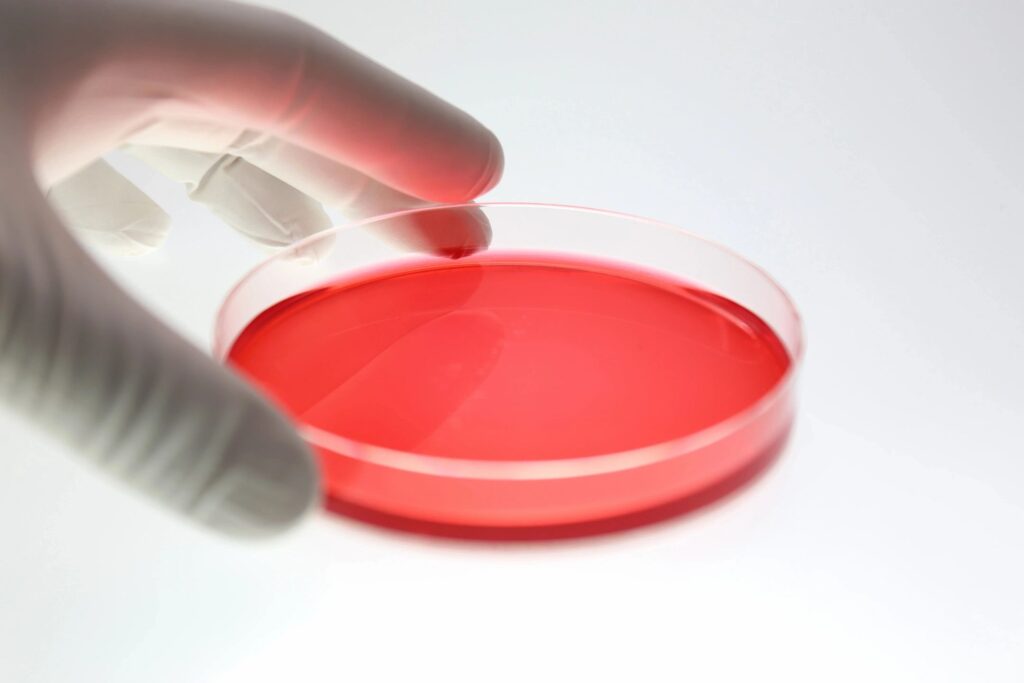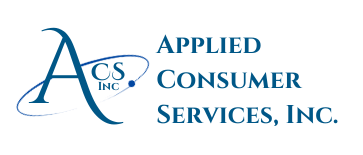
Food Analyses & Nutrition Labeling
Applied Consumer Services, Inc. conducts all types of food tests and analyses, including nutrition analysis for labeling, assay of vitamins and minerals, quality control, preservatives, trans fat, fatty acid profiles, shelf-life, microbiological tests, and many more. We also conduct analyses of all types of food supplements and herbal products
The majority of the tests are conducted in accordance with AOAC or USP methods.
We also offer consultation to clients for help in making a new food product, use of preservatives, microbiological tests needed, shelf-life tests, etc.
For the nutrition label, we tabulate our analytical results in the same format used on the label as required by the FDA. Based on the analysis results we give general nutrition claims for the front label. We analyze for protein, total fats, saturated fats, unsaturated fats, trans fats, cholesterol, total carbohydrates, sugars, dietary fiber, sodium, calcium, iron, vitamin A, and vitamin C. If required, we also run potassium, magnesium, vitamin D, vitamin E, B vitamins, etc.
Based on accelerated or real-time test results for changes in bacteria, mold, and/or organoleptic factors (color, odor, taste, texture), we can determine the approximate shelf-life of the food or beverage product. If needed, we can assist in reformulating the product to achieve a longer shelf-life including the use of approved and suitable preservatives.
We can run screenings for almost all types of bacteria and mold in food products. We run total plate count, E-coli, total coliform, fecal coliform, salmonella, staphylococcus A., pseudomonas, listeria, clostridium botulinum, total yeast and mold counts, etc. In the case of contaminated foods, we run forensic tests for harmful microbes and toxins such as pesticides, drugs, detergents, and other chemicals.
We can develop a new or improved food product. We will conduct some preliminary research and propose a food recipe for the client to evaluate. We have helped dozens of clients develop new or better food products. In some cases, we can make a small trial batch of the product for evaluation. If an existing product is to be duplicated or improved, we often can deformulate or reverse engineer the product and propose a formula. All rights belong to the client.
Using ion chromatography, we can run a sugar profile of most food products. Using a total sugar gravimetric assay we can determine the total reducing and non-reducing sugars. For most supplements and herbal products, we can test for drugs or other added ingredients, contaminates such as toxic heavy metals and chemicals such as pesticides, herbicides, and other organics. For herbal products, we can determine the type of herbs if standards are available. Also for herbs we can determine the stability at room temperature or under accelerated conditions.
Our laboratory offers the following testing services:
- Complete chemical analysis to obtain accurate values for the Nutrition Facts label. Includes new requirement (January 1, 2006) for trans fat listing.
- Additional analyses for desired trace minerals, vitamins, and some special items.
- Recommended label claims.
- Determination of FDA/AOAC water activity and equilibrium pH required for certain foods.
- Guaranteed analyses for pet foods and fertilizers.
- Stability and accelerated shelf-life tests.
- Design of foods to have desirable properties including long shelf-life and organoleptic properties.
- Analysis of food supplements and herbs.
- Analysis of bacteria, mold, and mycotoxins for quality control as well as for forensic purposes.
- Assistance with meeting all FDA requirements.
- Consulting regarding HACCP and sanitation requirements.
Shelf-Life of Food
The shelf-life of foods is extremely important for food safety and consumer acceptability.
Many people check the expiration date on the food package so as to be assured of the food purity and safety. People have died from botulism found in old cans of soup. The shelf-life of many foods is given based on room temperature storage without opening. After opening, most products must be refrigerated. Some products must be refrigerated at all times. Shelf-life tests must be designed according to the type of food.
We can estimate the shelf-life and expiration date of foods based on changes in bacterial levels, changes in food components, as well as any changes in organoleptic properties (color, taste, odor, texture,) after storage at room temperature or under accelerated conditions with higher temperatures and in some cases at higher humidity.
A real-time shelf-life test is more reliable but waiting several months or one year may not be feasible. Checking the food components, bacteria, mold, and/or organoleptic properties after real-time or after accelerated times allows an estimate of the shelf-life of the food product. The expiration data can be determined from this shelf-life data. For example, if a sample of packaged salad dressing shows no increase in non-pathogenic bacteria levels or any deterioration of organoleptic properties after storage at room temperature (25 deg.C) for 4 months, it probably has a shelf-life of 1 year. If it shows no changes after storage at 45 deg.C for 1 month (at 4 times the chemical degradation rate), it probably has a shelf-life of 1 year also. The expiration date for the product probably can be given as one year but additional testing might allow a 2 years shelf-life.
An optimum test would require several sampling times after real-time or accelerated time storage. For example, 3 jars of mustard would be stored at 45 deg.C. and one would be withdrawn at 1 month, one at 2 months, and 1 at 3 months. Each would be checked for organoleptic properties and for total plate count. Based on the data, a shelf-life can
be estimated.

Nutrition Facts Analysis
Foods, beverages, herbal products, and food supplements, are chemically analyzed for the nutrition facts ingredients needed for labeling the product. A fresh sample, with or without the formula known, is submitted for a series of AOAC chemical analyses in order to determine the levels of protein, fats, cholesterol, trans fat, carbohydrates, sugars, fiber, sodium, calcium, iron, vitamin A, vitamin C, and other items if needed. The analyses are standard AOAC methods. Our report gives the levels of each nutrient and percent of recommended levels where required by the FDA. The format is the same as given on food labels so that a printer can easily use the numbers. With food supplements and herbal products, slightly different label formats will apply.
For foods and supplements, the total proteins are determined by a Kjeldahl analysis for total nitrogen. The saturated fats, unsaturated fats, trans fats, and cholesterol are determined by solvent extraction and by gas chromatography/flame ionization detection (GC/FID. Total sugars are determined by wet chemistry and gravimetry. Specific sugars are determined by ion chromatography. The fibers are determined by wet chemistry. Carbohydrates are determined by difference after correcting for moisture and ash. The vitamins are determined by wet chemistry, titration, or HPLC methods. The metals are determined generally by ashing, by acid digestion and by atomic absorption spectroscopy. Special vitamins and special ingredients can also be determined if needed.
In the case of food supplements and herbal products, actual weights or units of the active ingredients are determined or estimated in addition to the standard nutrition facts items. Very special assay methods may be needed to verify the presence and levels of some herbs and food supplements items. A combination of two herbal ingredients may be restricted by the FDA, e.g. ma huang (ephedra) and gota cola or caffeine are not allowed in the same product.
Our analysis fees are reasonable and turnaround times are generally within one week. We also provide consultation on all food topics.
Food Preservatives
There is several FDA approved food preservatives used in very small amounts to control the growth of bacteria and mold. The preservative prevents spoilage and extends the shelf-life of the food or beverage. Our laboratory can conduct research to find the best food preservative for a new food and to make a test batch with the preservative.
The preservatives most widely used in foods and beverages are sodium benzoate and benzoic acid (to retarding bacteria), potassium sorbate and sorbic acid, (to retard mold), calcium propionate and propionic acid (to retard spoilage), and sodium ascorbate and ascorbic acid (vitamin C) to retard spoilage. These are listed as GRAS (generally recognized as safe) for use in foods.
Other preservatives used in trace quantities for some foods are BHT (butyl hydroxytoluene), BHA (butylhydroxyanisole), THQ (tetrahydroquinone), caprylic acid, ethyl formate, ethylene oxide, propylene oxide, parabens (methyl, ethyl, propyl, butyl, heptyl), sodium diacetate, dehydroacetic acid, sodium sulfite and sulfur dioxide, sodium nitrite, sodium nitrate, lactic acid, citric acid, acetic acid, and natamycin.
These preservatives can be used in certain foods and can be analyzed for their levels using various analytical techniques such as wet chemistry, thin layer chromatography (TLC), high performance liquid chromatography (HPLC), gas chromatography/flame ionization detection (GC/FID), ultraviolet/visible spectroscopy (UV/VIS), and fourier transform infrared spectroscopy (FTIR).
Our laboratory can determine if the preservative type and level are in compliance for the food product. If the product needs improvement or needs to have a longer shelf-life, we can conduct research to find a suitable preservative, sometimes natural, and then determine the new shelf-life.
Sugar Analysis
In the standard Nutrition Facts label, total sugars must be listed for all foods. The types of sugars are generally not specified but the total of all sugars and the total of any sugar alcohols are given. The total carbohydrates listing of the label includes all sugars, sugar alcohols, starches, fibers, etc.
We conduct all types of sugar analyses including total reducing sugars, non-reducing sugars, sugar alcohols, sucrose, fructose, glucose (dextrose), galactose, xylitol, ribose, etc. The sugars are usually extracted from the foods in order to conduct the analyses.
Some liquid foods can be analyzed directly without extraction.
The techniques used to conduct sugar analyses include ion chromatography (IC), high performance liquid chromatography (HPLC), thin layer chromatography (TLC), and wet chemistry. Gravimetric determination of reducing and non-reducing sugars is conducted with Fehlings Solution or Tollens Reagent. Monosaccarides and disaccharides can be analyzed using HPLC. Sugar alcohols are analyzed by HPLC.
For research on more complex sugars, we can conduct proton and carbon-13 nuclear magnetic resonance spectroscopy (NMR) and determine structures and stereoisomerism in some cases. Other sugar studies can be made with mass spectroscopy (MS), optical rotation, optical rotary dispersion (ORD) and FT-raman spectroscopy..
Microbiology of Foods
We offer all types of microbiological services for foods, beverages, food supplements,
and herbal products. Services include determination of microbe levels to establish safety, quality control, accidental or deliberate contamination, food shelf-life based on levels of microbes after a given storage period, etc.
Microbes frequently analyzed in this laboratory are total plate count (standard plate count), total yeast and mold count, total coliform, fecal coliform, E. coli, pseudomonas, salmonella, staphylococcus A, staphylococcus mirsa, listeria, clostridium botulinum, total anaerobics, Using standard plate counting techniques, plate streaking, multiple tubes for MPN, and other methods, we can determine all of the non-pathogenic microbes. Official methods such as BAM (FDA), USP, and APHA are used.

For some clients we conduct quality control tests of foods to determine if the food meets safety standards established for the type of food. For example, some foods should have less than 1 colony of E. coli per gram of food (< 1 CFU/g). Many foods should have a total mold count of less 1000 CFU/g of sample.
In the case of forensic studies of contaminated foods, we generally screen the product for total plate count, total coliform, E. coli, fecal coliform, salmonella, or other microbes depending on the type of food and the medical symptoms of the victim. For these legal samples, we try to use less than half of the sample and will store the remainder for other possible testing.
We also do a considerable amount of microbe challenge testing using a very high level of microbes, e.g. 10 million counts, tested against an antimicrobial product at a known level for a known time. Percent reductions of 99.9% (3 log) or better are generally obtained but reductions as high as 6 log have been obtained for some products.
Company
About Us
![]() 11890 NW 87th Court, Unit # 8
11890 NW 87th Court, Unit # 8
Hialeah Gardens, FL 33018
![]() +1 (305) 821-1677
+1 (305) 821-1677
Office Hours: Mon-Fri 9:00 am to 5:00 pm
